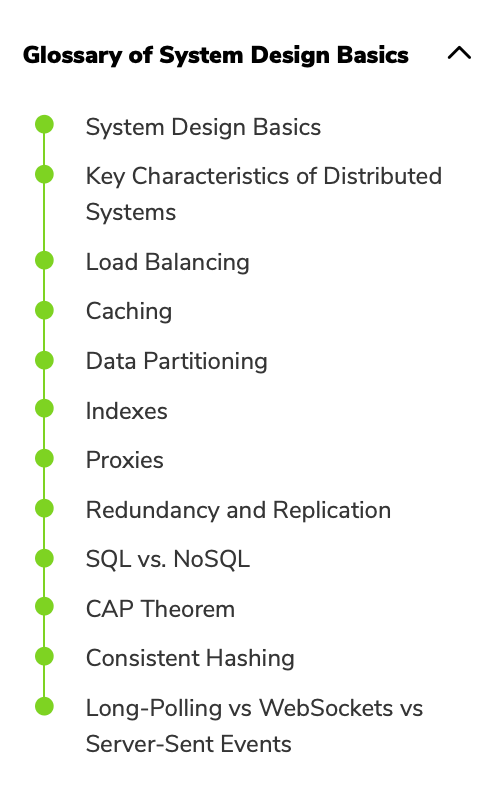Table Of Content
- Opinions on Grokking the System Design Interview? Is it enough on its own for system design interviews?
- Low-Level Object-Oriented Design (OOD) vs. Advanced System Design (ASD)
- Then the next step is to hone your system design skills
- What are the best resources to crack system design interviews?
- Key benefits & features

Understanding the different types of design interviews, whether they focus on low-level implementation details or more advanced System Design concepts, can give you the best chance of providing an answer that gets you hired. Systems design is the process of defining the architecture, modules, interfaces, and data for a system to satisfy specified requirements. Systems design could be seen as the application of systems theory to product development. And as System Design Interview questions make up a bigger part of the developer interview, having a working knowledge of distributed systems will pay dividends in your career. If you would like to solve interactive design problems there is no better resource out there than Grokking Modern System Design for Software Engineers and Managers. It was vetted and validated by Facebook and Microsoft engineers who helped design and build the actual systems those companies ask about in their interviews.
Opinions on Grokking the System Design Interview? Is it enough on its own for system design interviews?

System Design and the SDI require you to consider the system at a very high level and how to meet basic requirements. Solution architecting takes the individual software components into consideration but from more of a business and cost-conscious angle. Capacity estimation calculations (sometimes called back of the envelope calculations) can be somewhat daunting given the amount of mental math they require.
Low-Level Object-Oriented Design (OOD) vs. Advanced System Design (ASD)
Outlining a sustainable architecture that meets the initial requirements shouldn’t really require you to discuss microservice-level scalability. You’re right that machine learning and artificial intelligence are highly popular in tech news right now. It’s likely that the demand for engineers who are skilled in these areas will increase. Tech heavy hitters like Google and Microsoft have announced that some of their biggest products will be heavily invested in AI tech moving forward. A lot of other companies are going to follow suit, so if you have an interest, I highly recommend starting to learn AI and ML-related concepts now.
Then the next step is to hone your system design skills
Successful candidates rarely have much experience working on large-scale systems, and interviewers know this. Again, this is a discipline that has only been around for about fifteen years, and like everything else in software engineering, it is evolving rapidly. This is why, you’ll learn about the building blocks of modern systems, with each component being a completely scalable application. Depending on your specialization of choice, your interviewers will bend the SDI to more acutely test your abilities. For example, someone applying to be a data engineer would be questioned more on how to build scalable pipelines. Making sure that a system can ingest and sanitize large amounts of data is key to meeting the SDI requirements.
What are the best resources to crack system design interviews?
The lesson I want to impart here is the importance of leveraging previous knowledge and building upon existing design patterns to innovate new, and effective solutions. Lakshman’s experience working on DynamoDB allowed him to incorporate proven techniques to improve and expand an existing design. You’ll need to practice this general approach as you prepare to solve various problems in the System Design interview. At the same time, the Low-Level OOD interview remains one of the most common types of design interviews you’ll encounter during tech interviews. Coming into these interviews with a solid grasp of object-oriented design patterns will put you at a massive advantage. Unlike coding interviews, technical design interviews require thinking in broader, systemic terms.
Why System Design is Important to Learn?
During the webinar, I was able to answer a few audience questions live. But because we received so many fantastic questions from attendees — far more than we had time to get to during the event — I wanted to write a blog to answer even more of the best and most commonly asked SDI questions. For example, Java developers who want to become software architects can join this course to improve their knowledge of software design and system design.
What technical topics do junior engineers need to brush up on before an SDI?
There are also different types of design methods that you can make use of. They include Architectural Design, Logical Design, and Physical Design. Before I give you my verdict on whether you need to choose Educative’s Grokking Modern System Design For Software Engineers And Managers course, let me tell you a little bit about what system design really is. As an experienced Java developer I have been at both side of the table and I have also interviewed hundreds of Software Engineer candidates.
How I Cracked the Meta Machine Learning Engineering Interview - Towards Data Science
How I Cracked the Meta Machine Learning Engineering Interview.
Posted: Tue, 25 Oct 2022 07:00:00 GMT [source]
The key to unlocking data durability and consistency; replication deals with backups of data, but also being able to repeat processes at scale. Before I spent eight years working on distributed systems at Microsoft and Facebook, I definitely felt this way. But now, as someone who has participated in hundreds of System Design Interviews (on both sides of the table), I can assure you that there is a way through.
Consumers and businesses alike are online, and even legacy programs are migrating to the cloud. Distributed systems are the present and future of the software engineering discipline. The best way to think about the conversation is to imagine that you and a colleague are asked to design a large-scale system, and you are hashing out the details on the whiteboard.
By walking through the aspects of System Design in RESHADED, we can determine the areas where a strong-hire candidate communicated the right technical information at the right time. Join the Educative community of learners, and develop a solid foundation in system design. We’re proud of all the work that went into making Grokking Modern System Design for Software Engineers & Managers and can’t wait to see the impact it has on your career. Learning system design can give you a competitive edge in the job market, and it can also have a significant impact on your earning potential. Engineers with system design experience are in high demand, with the difference in compensation between an E4 at Facebook and an E5 being, on average, $121,000[1]. Another question in an SDI might be related to why we don’t design a system that’s already capable of handling more work than necessary or predicted.
How I leetcode for 6 months and land a job in FAANG (Facebook, Amazon, Apple, Netflix, Google) - Towards Data Science
How I leetcode for 6 months and land a job in FAANG (Facebook, Amazon, Apple, Netflix, Google).
Posted: Sun, 25 Aug 2019 15:09:05 GMT [source]
You will get an overview of database technologies and NoSQL solutions. In addition, you will also learn how to use caching for improving scalability and performance. I have seen many resources about algorithms and leetcode questions, but as engineers became senior, there is more emphasis on "System Design interviews" and "SW architecture".
System design is for any software engineer who wants to advance in their career. Once you’ve achieved consensus, now transactions from applications need to be committed across databases, with fault checks by each resource involved. Two-way and three-way communication to read, write, and commit are shared across participant nodes.

It’s important to know this interview because it’s become vital for landing a job and establishing the trajectory of your career. As I’ve written before, the SDI determines your level of seniority when you interview for a role. The issue you’re presumably asking is whether the course is worth the money and time you’re going to spend on it.
Real-world system building is an iterative process where we start with a reasonably good design, measure how it performs, and improve the design in the next iteration. Returning to Google Cloud Spanner, this system represents the type of case study that could turn up in an Advanced System Design interview. System Design interviews, on the other hand, take a broader look at the big picture. Here, your concerns are with an entire system’s overall architecture and design. Your interviewers expect you to develop a robust, high-level architecture that meets functional and non-functional requirements alike. You may need to consider properties like scalability, availability, and security in your decision-making process.

No comments:
Post a Comment